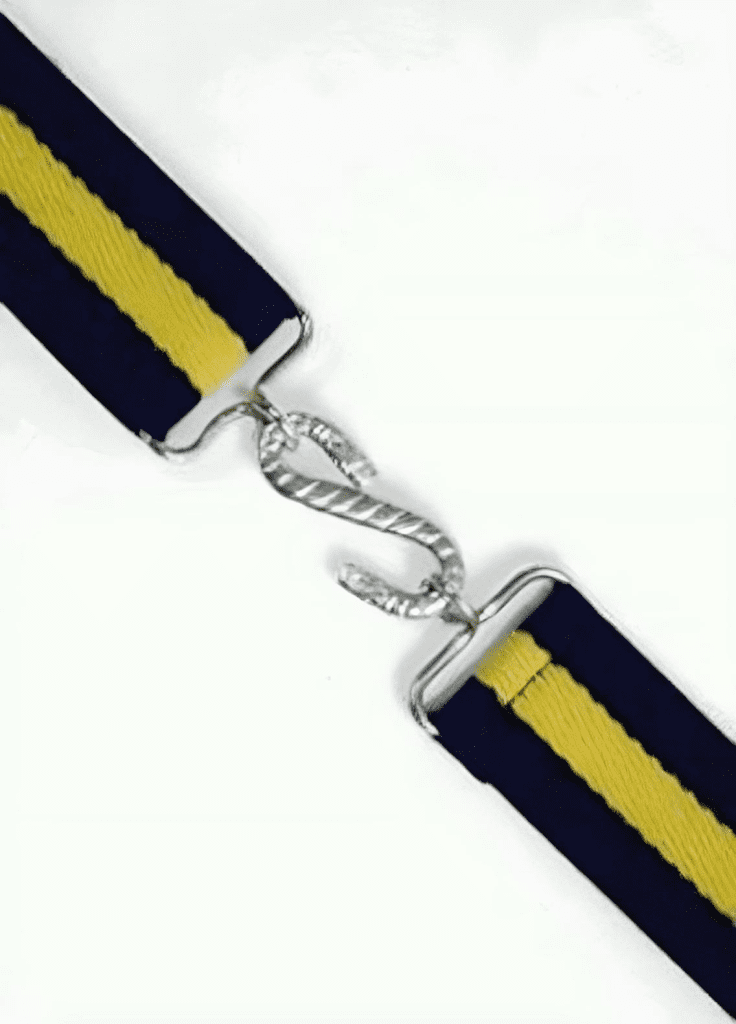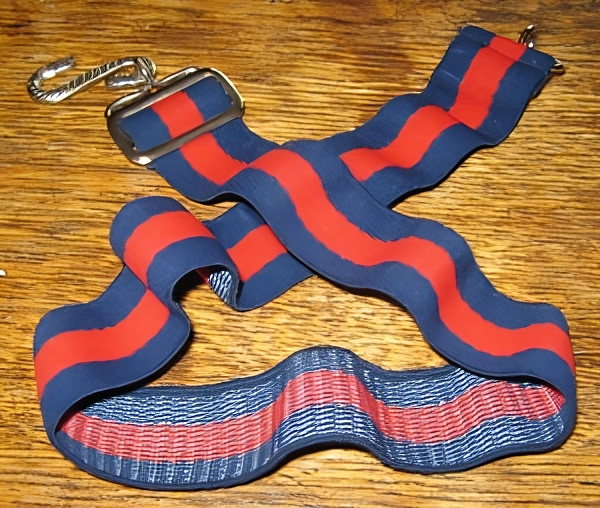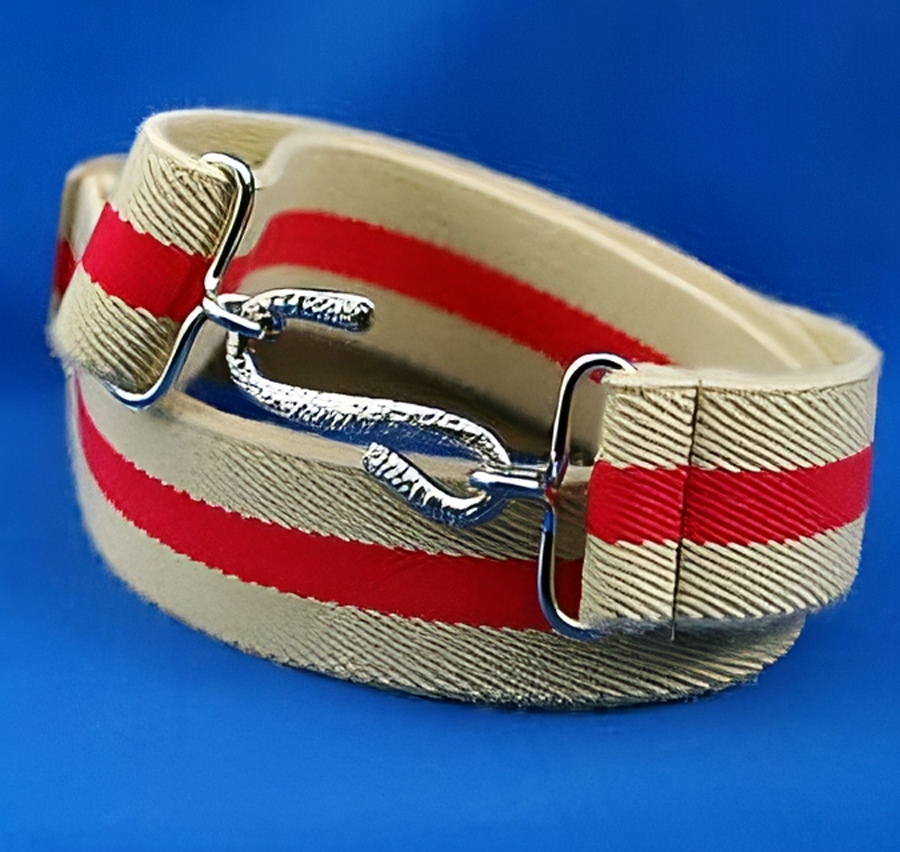The snake belt is a fascinating piece of British fashion history, deeply rooted in English culture and school traditions. Once an iconic part of boys’ wardrobes across the UK, this distinctive accessory was known for its practical design and unique “snake” buckle. From its origins in sportswear to its place in school uniforms, the snake belt represents a unique blend of functionality and style.
The Origins of the Snake Belt: From Sportswear to School Uniforms

The snake belt dates back to the mid-19th century and is believed to have originated as part of traditional sportswear in England. Early versions of the belt were popular among athletes due to their flexibility and ease of adjustment, making them a preferred choice for cricketers and tennis players. As noted by legendary cricketer W.G. Grace in 1888, belts were more suitable than braces (or suspenders in American terms), as they allowed for better movement during sports.
By the late 19th century, the snake belt had made its way into everyday boys’ wear, evolving into a staple of English school uniforms. Its elasticated design and distinctive S-shaped metal buckle, styled like a snake, quickly gained popularity among schoolboys. The adjustable metal slide and loop allowed the belt to fit snugly, ensuring safety during rough play and a comfortable fit as boys grew.
Design and Features of the Classic Snake Belt
The design of the snake belt is simple yet effective. Here’s what makes it unique:
- Elasticated Strap: Made from elastic material, the strap offered flexibility, allowing it to expand and contract as needed. This made it an ideal choice for sports and daily activities, as it accommodated movement without compromising comfort.
- S-Shaped Metal Buckle: The signature feature of the snake belt is its S-shaped metal buckle, which gives the belt its name. This design not only serves as the fastener but also adds a playful element to the belt’s overall look.
- Adjustable Slide and Loop: The belt’s slide-and-loop mechanism allowed for easy adjustment, making it adaptable to different waist sizes. This design ensured a secure fit and prevented the belt from becoming loose, making it a safer option for active boys.
The Snake Belt in School Life: A Part of British Tradition
The snake belt became synonymous with British school uniforms, particularly during the early to mid-20th century. It was often paired with both short and long trousers, making it versatile for different school outfits. In many schools, belts in distinctive school colors were available, adding to the uniform’s sense of identity. Schools frequently stocked snake belts in color combinations that matched blazers, caps, ties, and badges. For example:
- Primary schools often opted for belts with bright colors like yellow, brown, or red.
- Grammar schools leaned towards belts with more formal colors, such as navy blue, maroon, or dark green, to match their uniforms.
Snake belts were not always mandatory, but many boys chose to wear them as a badge of school pride. The belts were also worn outside of school, especially during sporting events or casual outings, demonstrating their versatility.
The Role of Snake Belts in Sports and Leisure
The snake belt’s origin in sportswear significantly influenced its popularity among schoolboys. As cricket and tennis were common sports in British schools, the belt’s elastic design was perfect for supporting loose-fitting trousers, commonly worn during matches. The belt’s durability and comfort made it a practical choice for activities that required physical exertion.
Even outside of organized sports, the snake belt was a favored accessory for boys during casual play. Its stretchy nature meant that it stayed in place during rough games, reducing the risk of accidents. This made it a safer alternative to traditional leather belts, which could come loose or dangle during active play.
Color Variations and Personalization of the Snake Belt

One of the snake belt’s standout features was its variety of color options. Available in both single and striped patterns, snake belts could be customized to reflect school colors, sports teams, or even personal preferences. The most common designs included:
- Solid Colors: These belts were often chosen for formal school uniforms, providing a sleek and neat appearance.
- Striped Patterns: Popular among athletes and students alike, striped belts featured two outer stripes in one color and a contrasting central stripe, making them more vibrant and fun.
Students often wore their school-issued belts with pride, but some boys also collected belts in different colors to wear during leisure time. For instance, boys in Luton, where local football team colors were black and white, often sported matching snake belts when attending matches.
The Decline and Revival of the Snake Belt
By the 1970s, the snake belt’s popularity began to wane. Changing fashion trends and the introduction of modern materials led to the rise of alternative belt designs, while school uniform standards became less rigid. The classic snake belt, once a staple of British school life, started to fade into obscurity.
However, the snake belt has experienced a modest revival in recent years, primarily due to its nostalgic appeal. Vintage enthusiasts and retro fashion lovers appreciate its unique design and historical significance. While the belt is no longer a common sight in schools, it remains a cherished item among collectors and those who appreciate traditional British style.
The Snake Belt vs. Braces: A Debate of Function and Fashion

The snake belt wasn’t the only option for schoolboys; braces (suspenders) were also commonly worn with school uniforms. However, the debate over which was better—a belt or braces—was a point of contention among students, parents, and even school authorities. While braces were effective at keeping trousers up, they restricted movement and could lead to round shoulders, as one preparatory school headmaster humorously noted. The snake belt, by contrast, allowed for greater freedom of movement, making it a more practical choice for boys who were always on the move.
Conclusion: The Lasting Legacy of the Snake Belt
The snake belt holds a special place in the history of British fashion, especially within school culture. Its blend of practicality, comfort, and a touch of playful design made it a beloved accessory for generations of schoolboys. Today, the snake belt serves as a nostalgic reminder of a bygone era, symbolizing both the traditions of British schooling and the evolving nature of boys’ fashion. While it may no longer be a common accessory, the snake belt’s impact on fashion history is undeniable—an enduring symbol of both form and function.


